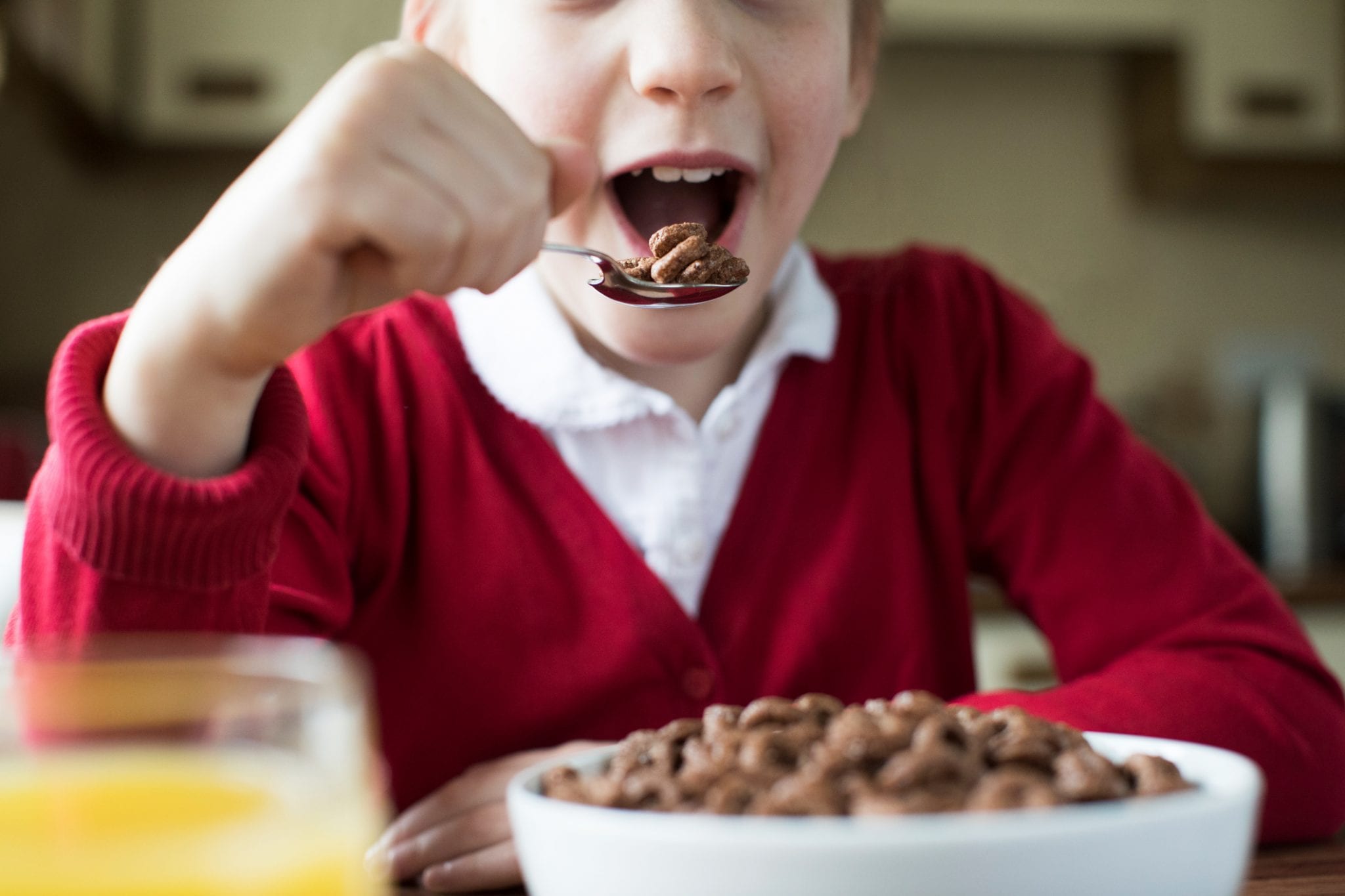Sugar may not be illegal and is often considered harmless for kids, but studies have shown that sugar can be more challenging to get off sugar than cocaine!4,5 Although it’s considered harmless compared to most drugs, sugar intake, in excess, can cause a host of problems for many adults and children alike.
According to the USDA, the average American consumes over 100 pounds of sugar annually.1 (To put that into perspective, consider that the number was just 4 pounds in 1700.)
Where does it come from? At least half of children’s sugar comes from soft drinks, fruit drinks, and sports drinks. The rest sneaks into our kid’s diets in the form of ketchup, teriyaki sauce, chocolate milk, and the obvious sweets like cookies, cakes, ice cream, and even breakfast cereal. Surprisingly, some “healthy foods” such as yogurt and instant-flavored oatmeal can pack 20-30 grams (5-7 teaspoons) of unnecessary added sugar!
Why Should You Reduce Children’s Sugar Intake?
1. Sugar Decreases the Immune System
Obesity and type 2 diabetes are obvious results of overeating sugar, but the effects of sugar can be a lot more insidious. Eating sugar will depress your child’s immune system several hours after consumption, making them much more likely to get sick. Finally, this is not what you want in cold and flu season!6,7
2. Sugar Increases Dental Cavities
Bacteria in your mouth feed off sugar and transform the sugar into acids that cause dental decay.8 The more sugar, the more likely your kids will develop dental cavities. Who wants to spend their money on preventable dental work!
3. Sugar Increases Inflammation
It is becoming evident that inflammation is the root of many problems in the body. On a more serious note, sugar consumption and the resultant brain inflammation have been scientifically linked to worsening the symptoms of depression and anxiety.2
4. Sugar Makes Learning More Difficult
Sugar consumption has been linked to reduced cognitive function, memory, and learning capacity. Brain fog is a common result of inflammation from sugar.3
5. Sugar Increases Childhood Obesity
The combination of empty calories, the switching off the fullness sensation, and the addictive nature of sugar make the perfect storm for unhealthy weight gain and childhood obesity.4 Weight issues have other harsh consequences, such as lowered self-esteem and decreased athletic performance.
Not sure where to start when it comes to reducing your child’s sugar intake?
Simple Tips for Reducing Children’s Sugar Intake:
1. Eliminate or Drastically Reduce Sugary Drinks
This includes sports/energy drinks, sodas, lemonade, fruit punch, and even 100% fruit juice. Manufacturers of 100% fruit juice often add sugar to it. And even if there’s no sugar added, the juicing fruit process typically eliminates the fiber once contained in the fruit. Thus, kids don’t feel full after drinking it and often overindulge. On average, a no-sugar-added 12-oz glass of orange or apple juice contains 40 grams of sugar. Focus on helping your kids (and yourself!) learn to drink more water and milk and eat whole fruit instead (see #2).
2. Serve More Vegetables and Fruits
Children (and adults!) should eat 5-9 servings of produce daily, such as apples, carrots, broccoli, bananas, and peppers. Whole fruits and vegetables contain water and fiber, which will help kids to feel full.
3. Eat Whole Foods That Aren’t Processed
Eating more foods in their natural state will ensure you know what is in them and eliminate added sugars.
4. Cook More at Home
I realize this is tough, but the more you can cook for your family at home and pack healthy lunches for kids, the more control you have over the foods you eat. Restaurants often add sugar (and lots of salt and fat) to enhance their menu’s taste. But these additives aren’t necessary for making foods taste good.
5. Pack Snacks Ahead of Time
If you’re out and about with your kids, it’s tempting to give in and grab a snack from the candy aisle, snack counter, or vending machine. But if you plan ahead of time and bring healthy, kid-friendly snacks with you, it’s possible to avoid this scenario. Fruits, veggies, dips (hummus, nut butter), trail mix, and nuts all travel well.






























